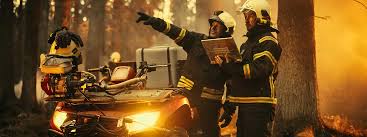
When disaster strikes in remote areas, standard communication networks often fail first. Whether you’re managing a research station in Antarctica, coordinating rescue operations in mountainous terrain, or maintaining contact with offshore facilities, establishing reliable emergency communication systems can mean the difference between life and death.
This guide walks you through the essential steps for creating robust communication networks that function when traditional infrastructure becomes unavailable.
Understanding Communication Challenges in Remote Areas
Remote locations present unique obstacles that urban emergency planners rarely encounter. Cellular towers become sparse or nonexistent beyond populated areas. Internet connectivity depends on vulnerable satellite links that weather can disrupt. Power grids may be unreliable or completely absent.
Geographic barriers compound these issues. Mountains block radio signals. Dense forests absorb transmissions. Extreme weather conditions—from arctic storms to desert heat—can damage equipment and reduce signal quality.
These challenges require specialized equipment and careful planning. Standard consumer devices that work perfectly in cities often prove inadequate when you need them most.
Essential Equipment for Isolated Communication
Your emergency communication toolkit should include multiple technologies to ensure redundancy. No single system can guarantee perfect reliability under all conditions.
Satellite Communication Devices
Satellite phones provide the most reliable voice communication in remote areas. Modern devices offer global coverage and work in conditions where other systems fail. Consider units with long battery life and ruggedized construction for harsh environments.
Personal locator beacons (PLBs) serve as backup emergency signals. These devices transmit distress signals to search and rescue services via satellite networks. They’re compact, waterproof, and have battery lives measured in years.
Radio Systems
High-frequency (HF) radios can transmit across continents when atmospheric conditions align properly. They require more skill to operate but offer communication possibilities when satellites are unavailable.
Very high frequency (VHF) and ultra high frequency (UHF) radios work well for shorter distances. A satellite two-way radio system can bridge the gap between local radio networks and distant emergency services.
Data Communication
Satellite internet terminals enable email and basic web access from remote locations. These systems typically require clear sky views and stable mounting platforms.
Mesh networking devices create local communication networks without infrastructure. They’re particularly useful for coordinating multiple team members across a small area.
Strategic Planning for Communication Networks
Effective emergency communication starts with comprehensive planning long before emergencies occur. Begin by assessing your specific location and identifying potential communication dead zones.
Site Assessment
Survey your area to identify optimal locations for equipment placement. Higher elevations typically provide better signal coverage. Note potential obstacles like dense vegetation or rock formations that might block signals.
Test different communication methods at various times and weather conditions. Signal propagation changes with atmospheric conditions, especially for HF radio systems.
Redundancy Planning
Build multiple communication pathways into your system. If your primary satellite phone fails, having backup radio systems ensures continued contact with the outside world.
Create communication schedules with outside contacts. Regular check-ins help identify problems early and ensure someone will notice if communications cease unexpectedly.
Power Management in Remote Locations
Reliable power supply challenges many remote communication systems. Equipment that works perfectly with wall power may struggle with battery or solar power limitations.
Battery Systems
Calculate power requirements for all communication equipment. Include transmission power, standby consumption, and charging needs for portable devices.
Invest in deep-cycle batteries designed for repeated discharge and recharge cycles. Lead-acid batteries work well for stationary installations, while lithium batteries offer better performance for portable applications.
Alternative Power Sources
Solar panels provide sustainable power for sunny locations. Size your solar array to account for reduced sunlight during storms or winter months.
Small wind turbines supplement solar power in windy locations. Hand-crank generators serve as emergency backup power for critical communications.
Training and Maintenance Requirements
Even the best equipment proves useless without proper training. Team members must understand how to operate communication devices under stress and in challenging conditions.
Operator Training
Practice using all communication equipment regularly. Muscle memory developed through repeated use becomes invaluable during actual emergencies.
Learn basic troubleshooting techniques for common problems. Understanding how to replace fuses, adjust antenna connections, and interpret signal strength indicators can restore communication when technical support isn’t available.
Equipment Maintenance
Establish regular maintenance schedules for all communication equipment. Clean connections, test batteries, and verify antenna performance before equipment failures occur.
Keep spare parts and repair tools readily available. Remote locations make equipment replacement difficult, so local repair capability becomes essential.
Building Reliable Emergency Networks
Creating effective emergency communication systems requires balancing reliability, cost, and ease of use. Start with basic, proven technologies before adding complex systems.
Begin with a primary communication method that offers the best reliability for your specific location. Add secondary and tertiary backup systems to ensure communications remain possible even when primary systems fail.
Test your complete system regularly under realistic conditions. Conduct drills that simulate actual emergency scenarios to identify weaknesses before they become critical problems.
Document all procedures and keep written instructions with your equipment. Electronic manuals become useless when power fails, but waterproof written guides remain accessible.
Consider joining amateur radio emergency networks in your region. These volunteer organizations provide valuable training and can serve as communication relays during major disasters.
Remember that effective emergency communication depends more on preparation and training than on expensive equipment. A simple, well-maintained system operated by trained personnel will outperform complex equipment that nobody understands.


